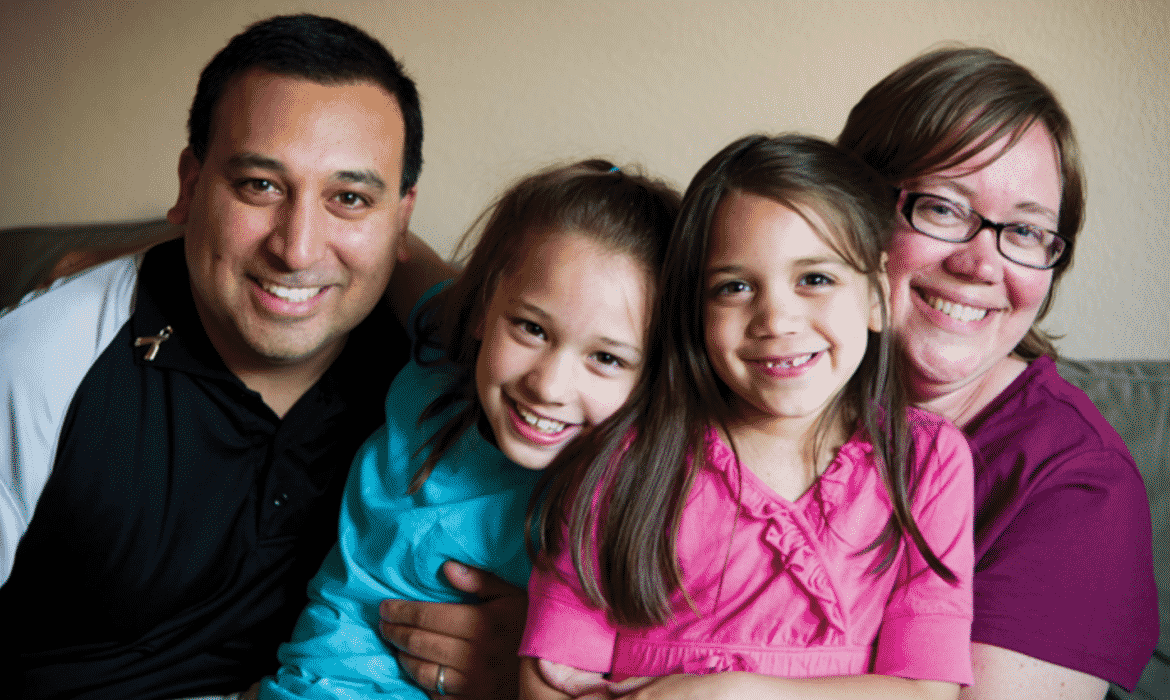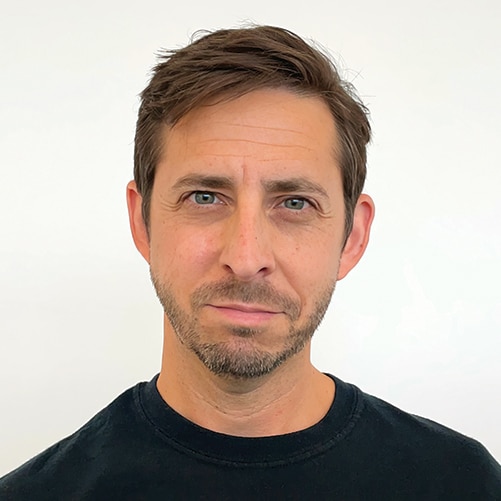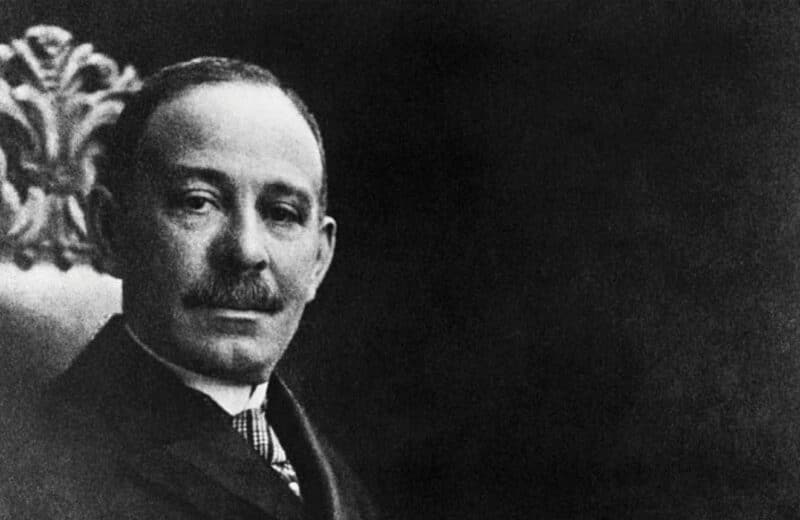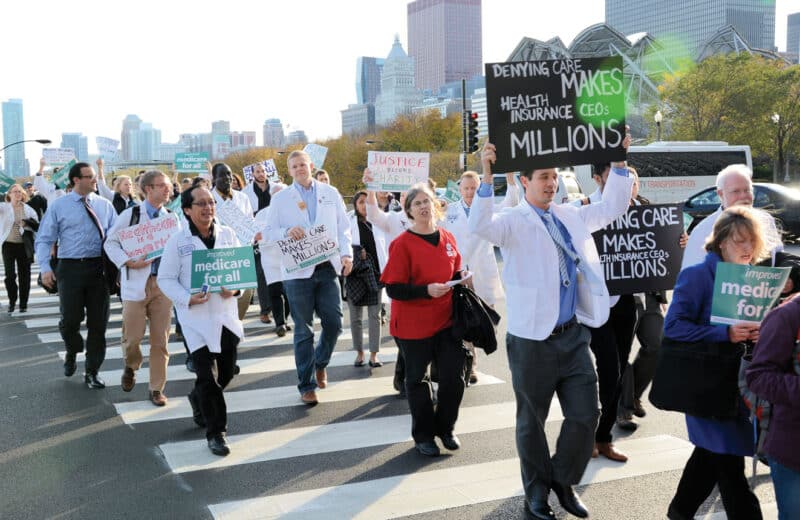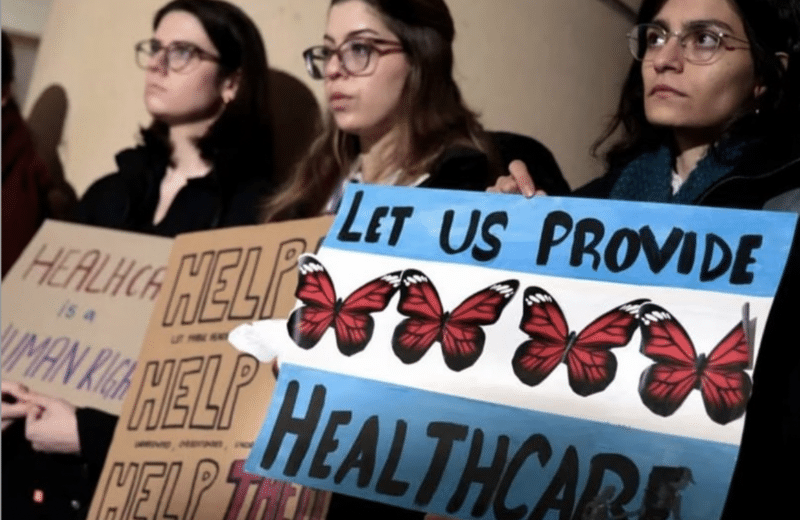When it comes to pediatric cancer, there are many uncertainties. But clinical trials are quickly saving more and more lives and letting kids, like Abigail Mendoza, live.
Abigail Mendoza sat at the dinner table chewing alternating bites of homemade pizza and ranch- drenched carrot sticks. Her grin was constant. A toothy mash-up. A cross between childish innocence and clever mischief.
“What is a musician’s favorite cereal?” she asked.
What?
“A flute loop.”
Her younger sister, Amanda, threw her head back in hysterics. Her parents, Michael and Judy, laughed the kind of laugh grown-ups give when they hear their child tell a silly joke. Still, there was pride in their eyes. Not only because Abigail recently had been voted Funniest Kid in Class, but perhaps because four and a half years ago, Abigail was diagnosed with cancer.
Cancer by the numbers
The National Cancer Institute (NCI) reports that in 2007, approximately 10,400 children under the age of 15 were diagnosed with cancer in the United States and that more than 1,500 would die as a result. While those numbers are nothing to scoff at, and cancer is still the leading cause of death by disease in U.S. kids ages 1 to 14 years, cancer is still considerably low in this age group.
Think of it like this: NCI says that on average, one to two children will develop cancer each year for every 100,000 kids.
There are 12 major types of pediatric cancers. Of those dozen, leukemia, brain and central nervous system cancers account for more than 50 percent of all new reported cases. One-third of these cases are leukemia, a blood cell cancer. The most common type is acute lymphoblastic leukemia. This cancer is aggressive. It’s bred when there are too many lymphoblasts, or immature white blood cells, found in the child’s blood or bone marrow.
The good news is that those with Acute Lymphoblastic Leukemia (ALL) now have more than an 80 percent survival rate, according to Dr. Paul Kent, assistant professor of pediatrics and attending physician in pediatric hematology/oncology at Rush University Medical Center. Compared to adults, children’s rate of survival is higher. Why? Children are one-disease people. Adults have multiple problems. Some are chronic smokers and drinkers; some have heart problems and ulcers. Kids are resilient. And so the treatments are more aggressive.
“People think we’re crazy because the doses and treatments we give patients are so intense,” Kent says. “But I tell people, ‘This is World War II; not Vietnam; not Afghanistan. We’re going to win this.’”
According to Kent, a child’s treatment for leukemia may take longer than an adult’s would. But the doctor often avoids transplant surgery, something more common in adult treatments because it can shorten the treatment but is more evasive. Longer treatments mean more drugs and likely extended side effects.
Beyond leukemia, solid tumors, such as brain tumors, are found in most cancer-stricken patients age 1 and up. One such solid tumor is neuroblastoma. It’s a cancer that arises in immature nerve cells and affects mostly infants and children. It is a less common cancer, which adds to the mystery of how to cure a child with it. Unfortunately, unlike leukemia, oncologists are not as successful, curing only 10 to 40 percent of stage 4 cases. That’s less than half of leukemia cure rates.
The “penguin waddle”
Abigail was diagnosed with neuroblastoma in February 2007, when she was just 3-1/2 years old.
It’s harder to diagnose cancer in kids, than in adults. It’s a rare silent disease. Many doctors don’t even bother to look for the signs. Often, the symptoms that lead to a doctor’s diagnosis are pointed out by the kids themselves.
“I don’t think Abigail knew she didn’t feel well,” says her mother, Judy. “She was 3-1/2 years old with severe constipation issues. But we chalked that up to potty training.”
When the Mendozas took Abigail to the ER to run gastroenteritis tests, Abigail kept telling them that her legs hurt. At one point, she stood up and fell right back down. She was given Motrin but could only walk comfortably with a waddle. Her parents called it her penguin waddle.
She had to walk up and down stairs at preschool, and she would cry. Judy thought she just didn’t want to go to school. Eventually Abigail made it clear that it wasn’t school she hated—it was the pain. They eventually took Abigail to Lutheran General Hospital in Park Ridge and almost immediately following the tests, they were given a diagnosis—and a recommendation.
“Thank goodness the oncologist there was so straightforward,” Judy says. “He told us, ‘I’m a doctor, and I’m a dad. Go see Sue Cohn at Comer.’” And they did. Abigail’s biopsy proved worse than the doctor’s original assumption that she was at Stage 3. In fact, Abigail’s neuroblastoma was at Stage 4.
At Comer Children’s Hospital at the University of Chicago (U of C), Abigail lived as best as any preschooler with cancer could. She loved the clowns. Her feet would start dancing whenever they came around. She remembers one of the clowns coming into her room and trying to eat a chair. She remembers the fun at the hospital, her friends and the special nurses. And she remembers Dr. Cohn with great clarity.
Dr. Susan Cohn is a professor and the director of clinical research in the Department of Pediatrics, Division of Hematology/Oncology at U of C. She has a particular interest in neuroblastoma and recalls Abigail fondly, saying that she was smart, funny and really a good sport about the whole thing.
Abigail, as well as her parents, had a lot to learn.
“To be thrown into that world… I didn’t know anything,” says Judy. “I didn’t associate ‘mass’ as cancer, I thought it was just…something. I slowly got that ‘oncologist’ means cancer doctor; that ‘mass’ means tumor… I didn’t know cancer had stages, and thank goodness, because had I!…, and the doctor told me Stage 4… ! We all went step-by-step.”
If it’s hard for an adult to grasp what’s happening, how do you explain it to a child? How do you tell a three-and-a half-year-old that they have cancer and prepare them for what it means and what will happen to their body? Abigail’s parents found a way to relate her illness to her.
A tube was stuck into Abigail’s chest to be used for blood draws, chemotherapy infusions and blood and platelet transfusions. This central line’s name was George. And he became a close family friend.
“First, we named it,” says Judy. “Then we told her that George helped take out her garbage.”
George was the best kind of friend a little girl with cancer could ask for. Selfless and hardworking, he stuck by Abigail throughout her entire treatment. George took her medicine for her. When she needed platelets, well, that was just George drinking his orange juice. When her dressings needed changing, George was getting a bath.
At one point, another line was put into Abigail, and that tube was George’s friend, Georgette. It didn’t last long, and Georgette was quickly removed. So, when it came time for George to be taken out, Abigail understood that he was going to live with Georgette. For 13 months, George was right there with Abigail. It may have been hard for her, but she had to say good-bye to her loyal friend.
Through six cycles and eight months of initial treatment, Abigail had several biopsy surgeries, high doses of chemotherapy for 96 straight hours at a time, stem cell transplants and 12 sessions of radiation, during which the bubbly, active little girl would have to lie perfectly still for five to seven minutes. Early in her treatment, as a result of the chemo, she developed mucositis, which caused painful and debilitating ulcers in her mouth. She was hospitalized, and her treatment stopped until her white blood cells were high enough to take more of a beating.
On a trial basis
In a twisted sort of irony, the more kids with cancer, the better the chances of saving those kids become because doctors can make more studies. In 1975, there were 11.5 per 100,000 cases of children diagnosed with all forms of invasive cancer. In 2004, it was 14.8 per 100,000. The number of cases went up, but death rates decreased dramatically.
Adults with cancer tend to be treated with drugs administered by their own private doctor. The patients usually want fast treatments their doctors tell them will work. And because the numbers are greater in adult cancer, so are the statistical certainties. It is incredibly uncommon to find a pediatric oncologist in private practice because it’s so hard to sustain that business. Sick kids don’t generate money; they cause a loss. Therefore, teaching hospitals are ideal for pediatric cancer because they can support their efforts with research grant money.
University hospitals, like Northwestern, U of C and Rush, have doctors who specialize in different types of cancer with a strong team approach to treatment. Their care is also more personalized because a doctor at a teaching hospital may see 100–120 new patients a year, while a private practitioner who specializes in breast cancer, for example, may see 180 or more.
Similar to private practices, drug companies aren’t developing drugs aimed at kids. It’s just too narrow a market. It’s not sound business.
“We haven’t had any new drugs in the last 10 to 15 years,” said the late Dr. James Nachman, a pediatric specialist at the University of Chicago. “There’s very little that’s new. What’s changed dramatically is [that we have] more understanding of the biology of things.”
Dr. Morris Kletzel is the Meryl Suzanne Weiss professor of pediatrics, division head of Pediatric Hematology, Oncology and Transplantation at Northwestern University Feinberg School of Medicine and director of Cancer and Blood Disorders at Children’s Memorial Hospital. He says, “I’ve been around the block for some time. I’ve seen the transition from where most of the patients would die.”
Now, with higher average percentage rates of survival, those days are slowly making their way into the dustbin of history. “It’s the way pediatrics work,” says Kletzel. “We are organized and have a limited amount of patients, so we want to make progress, with what we have.”
The progress Kletzel talks about has been made through a worldwide medical community known as the Children’s Oncology Group (COG). It’s a collaborative. And through COG, doctors have been able to learn more, share more and enhance treatments through clinical trials. This plug-and-chug approach has allowed the medical world to see a significant improvement since they began.
“We’ve built on previous studies and have made a lot of progress because of these studies,” Cohn says. “We’ll compare a treatment regimen that is considered the standard of care based on the results of a previous trial to a new treatment regimen. The treatment regimen that results in the best outcome is then the new standard of care for the next clinical trial.”
All of this data is being carefully collected, recorded and shared internationally. Pediatricians work together because their patient numbers are so small. To make matters trickier, Kletzel says only 2 percent of adult patients participate in clinical trials, with the majority of pediatric patients in trials. Still, Kletzel has developed some trials that are focused on stem cell transplantation, like the kind Abigail received. He has found through his trials that these transplants can help other diseases as well.
“Our goal is to have every kid in America be enrolled in a large clinical trial,” says Kent. “As opposed to being in a pharmaceutical program, which is very common in the adult world.”
There are three phases to any clinical trial. The first is to test the toxicity of the drug in the body. The second is to see whether the drug is even effective against the specific disease. The third phase is to test the combination of effective drugs and a comparison with standard drug combinations to see which is better.
“The other major focus is on cancer survivorship,” Nachman said. “Almost every pediatric group has long-term follow-up through adulthood to make sure they get into other programs with medical oncologists and get monitored for side effects. And sure, it’s great to know what they’re like at 20 years old, but we don’t know what they’re like at 40 or 50. There are now fellowships that specialize in doing just that.”
No time to celebrate
Abigail’s clinical trial started in early November 2007, nine months after her diagnosis and after she had completed chemotherapy, radiation and stem cell transplants, when she was N.E.D. (No Evidence of Disease).
The clinical trial Abigail took part in was called immunotherapy. It has been specifically tailored for patients with neuroblastoma. “It is given at a certain phase of treatment, when patients have already received a lot of therapy and are in remission,” Cohn says.
As intended by the nature of these studies, what was learned from Abigail will be used to help kids who come after her. Because of the way COG works, this treatment is not specific to Comer. Children at other hospitals throughout the country have immunotherapy trials available to them.
But enrolling in the trial wasn’t an easy choice.
“We had no moment to celebrate the remission because she went right into the immunotherapy treatment,” Judy says. And more treatment could mean more side effects. But a relapse could be far, far worse. Deadly even.
“So we had to say, ‘What do we do?’ It was hard because she was technically cancer free. We gave Abigail the choice: She could simply take some pills or go back for more treatment.”
“I think God wants me to just take pills,” she told her parents.
“But really,” says her mother, “we didn’t have a choice because Dr. Cohn believed it would help both Abigail and medical advancement–just like it did for those before us who went through stem cell research trials. It was a study; a random selection. A draw. We had a 50/50 chance of being randomized to the immunotherapy arm of the study.
“The side effects were bad. There were lots of issues. The treatment causes lots of pain. The shots she was given made the side effects worse. Abigail would get continuous morphine for five days during the infusions. She’d get real puffy, though my husband thought she looked like the cutest thing in the world. She suffered labored breathing, and we almost ended up in the ICU. We had to stop the infusions twice. The idea is to build an immunity to neuroblastoma.”
Through it all, Michael and Judy had total faith in Cohn and her nurse practitioner, Kelly Kramer. They treated their child not as a test subject or something in a petri dish, but as Abigail Mendoza.
The trial lasted six months. Half of the patients received what was considered the standard care, which meant receiving a drug called retinoic acid. The other half of the children, including Abigail received the standard care plus immunotherapy. So, she received an additional five cycles of monoclonal antibody, plus drugs that stimulate the immune system as well as six cycles of isotretinoin, commonly known as Accutane, a drug used to treat acne, something Judy finds hopeful and because she is thrilled that her daughter may never know the horrors of having zits.
The children in the arm of the trial who received immunotherapy had a 66 percent event-free survival rate after two years, whereas the others only came in at 46 percent. Cohn says that to improve survival by 20 percent is remarkable and that most adult cancer studies prolong survival rate by only three months.
“This is the most exciting result we have ever seen in a neuroblastoma trial. Immunotherapy is now considered part of the standard of care for children with high-risk neuroblastoma,” Cohn says.
Details regarding this study were recently reported in the New England Journal of Medicine.
The joys of youth
Throughout the majority of her stays at Comer, Abigail kept her smile. She would describe her pain using a scale of color-coded smiley faces. She would say, “I’m feeling a little blue face,” which was only a two on the scale. She never once felt a red face, which was a 10.
“She knew that the helicopter at Comer was red and that kids in the red helicopter had red pain,” Judy says. “The highest she ever made it to was yellow. Even within a week of a major tumor extraction, she was up, running in the halls of the hospital.”
Abigail’s energy and charm were infectious throughout Comer. It seemed everyone wanted to talk with her and offer her treats and stickers… A receptionist in the radiation office had a red plastic Staples “That Was Easy” button sitting on her desk. She always offered Abigail the chance to slap the button down like a game-show buzzer during checkout. It was Abigail’s favorite thing to do, perhaps making radiation a little bit easier.
But there were still those yellow days. When her family would come to see her, they would first send Abigail’s then-baby sister, Amanda, into the room. They called it The Amanda Gauge. They knew that if Abigail didn’t want to see her sister, she must have been feeling really bad.
From the start, Michael and Judy knew that being depressed was not an option. Attitude has so much to do with healing. They did their best to keep things normal. They made the hospital room feel like any room at home; packed with stuffed animals, toys, games and pictures on the wall. The Mendozas would even eat dinner together as a family in the hospital.
When you ask her about it now, Abigail will mostly tell you about the clowns and her friends. She doesn’t remember the vomit or diarrhea. And if she does, she doesn’t talk about it. If there’s a lull in the conversation, she’ll launch into a new story. She’ll make fun of Justin Bieber because, believe it or not, this 8-year-old cancer survivor is immune to Bieber Fever. Maybe she just doesn’t like boys yet. She’s a bigger fan of Ke$ha and Katy Perry and will gladly talk about their music or the kids in her class or go outside to play with her sister before it gets too dark.
“Her memories of it fade every day,” her mother says. “But she’s aware. We’ve lost friends. She’s the only one who went through therapy who hasn’t relapsed or passed away. Two have died; first Antonio and then Victor.”
During a recent routine scan, Abigail told the child life specialist that she wanted to watch SpongeBob SquarePants. The specialist told her that sometimes, SpongeBob actually visits the hospital. Abigail looked at her mother and said, “I know who would have liked that… Victor!”
“She misses him but knows he doesn’t have any more pain,” Judy says.
Of Abigail’s friends who have died or relapsed, not one of them had the clinical trial.
Abigail goes back every six months to get a routine scan to be sure she is still cancer free. Soon enough, she won’t need to get a scan. She gets a colored bead for every step along the way. She has something like 850 beads, and she can tell you what each one means. She knows she had cancer and realizes how lucky she is that she is entirely cancer free. Even 5-year-old Amanda, who was just a baby when her sister was sick, will say, “We’re so lucky Abigail doesn’t have cancer.” It’s been three years since Abigail has been cancer free.
“Before Abigail, I would see kids in St. Jude’s ads and think, ‘Oh, those poor little bald children,’” says Judy. “Unless you live in that world, you don’t know about it. Now I get phone calls from friends about other people’s kids who are diagnosed. It’s much more prevalent than you first think, and we’ve got to make a difference.”
Judy gets phone calls from someone who knows someone who knows someone else whose kid was just diagnosed. Maybe because she serves on the national board for American Childhood Cancer Organization. Maybe because she understands.
“I would never say that I’m glad Abigail got sick, but I’m glad for what we learned, and I’m glad it made us see what was really important. And what’s important is our family, waking up and being healthy. We don’t get worked up over the little things.”
The Mendoza house is filled with laughter. The two girls have endless energy, and Michael loves to egg them on. He calls Abigail “Giggles” because she is always laughing. It’s clear where she gets her sense of humor because Dad is a bit of a troublemaker. Judy maintains a happy, orderly home with a smile and a laugh.
During dinner, it’s Amanda’s job to eat the sausage pizza and Abigail’s to eat the ranch dressing. She loves the stuff. Absolutely loves it. Abigail just had her eighth birthday party at the place where she and her friends go bowling. You might say that’s a cool idea. But “cool” to 8-year-old girls doesn’t mean what you’d think. Abigail says it’s an acronym meaning, “Constipated Overrated Outta-style Loser.”
Kids, right?
Confident, yet uncertain about what she wants to be when she grows up, Abigail teeters between becoming a teacher or a doctor. From where the rest of us are sitting, she’s already both. Because at age 8, she can sure teach us a lot about cancer. But really, she can teach us even more about life.
(Dr. James Nachman died on June 10 while on a rafting trip with friends in the Grand Canyon. A heart attack is the suspected cause. His passing is a loss to the medical community but the impact he left on pediatric cancer will continue to affect the way patients are treated.)

